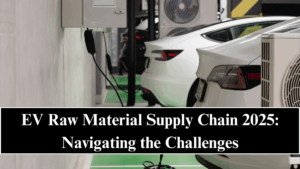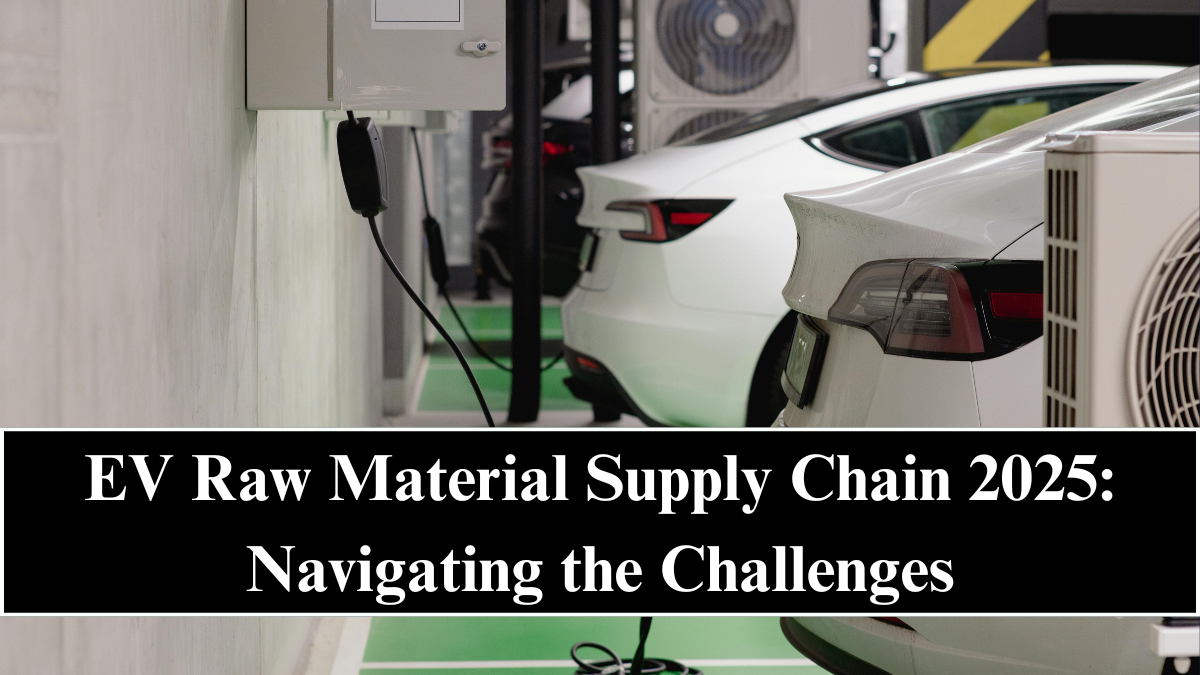The global electric vehicle (EV) revolution has entered a new phase in 2025—one defined not just by innovation in technology but by competition for raw materials. As EV adoption accelerates worldwide, the supply chain for critical resources like lithium, nickel, cobalt, and graphite has come under immense pressure.
Automakers and governments are now realizing that the future of electric mobility depends on securing, recycling, and localizing these materials to ensure sustainable growth and cost stability. The EV raw material supply chain has thus become one of the most strategically important and tightly contested arenas in the global economy.

The Global Demand Surge
In 2025, global EV sales have surpassed 15 million units annually—fueling an unprecedented demand for batteries. Each electric car requires thousands of lithium-ion cells, meaning the raw material requirements per vehicle are massive.
To put it into perspective:
-
A single EV battery needs around 8 kg of lithium, 35 kg of nickel, and 20 kg of manganese.
-
Global demand for lithium alone has tripled since 2020, with projections showing a fivefold increase by 2030.
-
Nickel and cobalt prices have seen record volatility due to geopolitical conflicts and supply disruptions.
This surge has exposed deep vulnerabilities in the EV supply chain, pushing industries to rethink sourcing strategies from the ground up.
Key Materials Powering the EV Revolution
The performance, safety, and sustainability of EV batteries depend on a select group of key minerals. In 2025, these materials remain central to EV production:
-
Lithium: The backbone of energy storage, extracted from salt brines and hard rock mines in Australia, Chile, and Argentina.
-
Nickel: Enhances battery energy density and performance; major suppliers include Indonesia, Russia, and the Philippines.
-
Cobalt: Used for thermal stability; however, its supply is limited and largely dependent on the Democratic Republic of Congo.
-
Graphite: Serves as the anode material in most lithium-ion batteries.
-
Manganese and Copper: Provide structural strength and conductivity for battery cells.
The challenge in 2025 is balancing supply chain ethics, cost, and environmental responsibility while maintaining production momentum.
Supply Chain Bottlenecks and Risks
Despite massive investments, the EV industry faces multiple bottlenecks in raw material sourcing and logistics:
-
Geopolitical Tensions: Trade restrictions between major economies have affected global mineral exports.
-
Limited Mining Capacity: It takes 5–10 years to develop new mines, far slower than EV production growth.
-
Environmental Concerns: Lithium and cobalt mining have raised sustainability and water consumption issues.
-
Price Instability: Market fluctuations increase production costs and impact vehicle affordability.
-
Overdependence on Few Suppliers: The majority of EV minerals come from only a handful of countries, making the system fragile.
These risks have prompted automakers and governments to regionalize and diversify their supply chains through new partnerships and local processing initiatives.
The Rise of Recycling and Circular Supply Chains
One of the biggest trends in 2025 is the rise of battery recycling and circular economy models. Instead of relying solely on mining, manufacturers are investing in facilities that recover valuable metals from used batteries.
Leaders in this space include:
-
Redwood Materials (US): Recovering over 95% of lithium, nickel, and cobalt from spent batteries.
-
Umicore (Belgium): Operating large-scale recycling plants for European EVs.
-
Tata Chemicals and Exigo (India): Building circular recycling loops for local markets.
By reusing critical minerals, these companies are reducing environmental impact, stabilizing supply, and cutting raw material costs by up to 40%.
Localizing Supply Chains and New Trade Routes
To reduce dependency on imports, many nations are developing local EV material ecosystems.
-
India is exploring lithium reserves in Rajasthan and Karnataka.
-
Europe is investing in gigafactories and processing units to ensure independence from Asian supply chains.
-
The US has passed policies under the Inflation Reduction Act (IRA) incentivizing domestic sourcing and recycling.
-
China continues to dominate raw material refining, processing over 70% of global lithium and 60% of cobalt.
New trade alliances are emerging to ensure steady supply—such as Australia partnering with Japan and the EU for lithium exports and African nations forming joint frameworks to ensure ethical mining practices.
Technological Innovations in Material Efficiency
2025 has also seen technological innovation aimed at reducing material dependency and improving resource efficiency.
-
Solid-state batteries require less cobalt and nickel.
-
Sodium-ion batteries offer a lower-cost alternative for short-range EVs.
-
AI-driven supply chain analytics predict shortages and optimize logistics.
-
Nanotechnology allows better use of smaller material quantities with higher energy density.
These advancements not only strengthen supply stability but also help achieve global net-zero targets faster.
The Road Ahead: Building a Resilient and Ethical Supply Chain
The future of EV production depends on creating a transparent, ethical, and sustainable supply network. Companies are adopting blockchain-based tracking systems to ensure materials are sourced responsibly and meet international sustainability standards.
By 2030, the EV raw material industry is expected to be fully digitalized, with smart contracts and AI-driven logistics managing global trade routes. Governments and corporations alike are also pushing for:
-
Recycling-first manufacturing policies
-
Zero-carbon mining technologies
-
Shared global reserves for critical materials
-
Ethical sourcing certifications to prevent human rights violations
The next decade will define not just who leads in EV production—but who controls the foundation of green energy economics.
FAQs
What are the key materials in the EV supply chain?
Lithium, nickel, cobalt, graphite, manganese, and copper are the most critical components for EV batteries.
Why is the EV raw material supply chain under pressure?
Because EV demand has surged faster than mining and refining capacities, creating shortages and price volatility.
How are automakers managing raw material shortages?
By investing in recycling plants, local mining, and long-term trade partnerships to ensure stable supply.
What role does recycling play in EV sustainability?
Battery recycling helps recover up to 95% of valuable metals, reducing environmental harm and import dependency.
What’s the future of EV material sourcing?
The future will focus on localized, transparent, and circular supply chains, using AI and blockchain for real-time monitoring and ethical sourcing.
Click here to know more.
